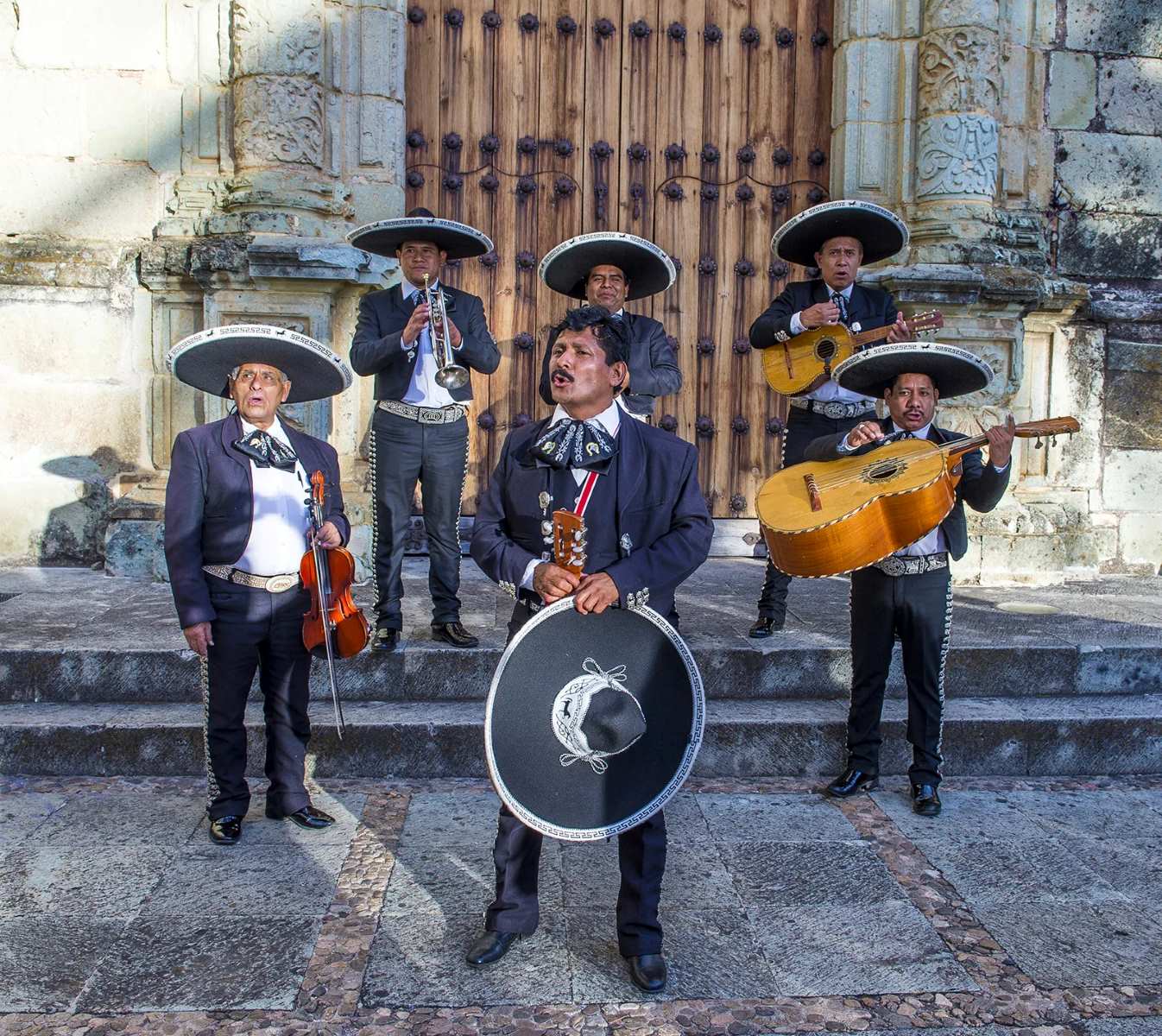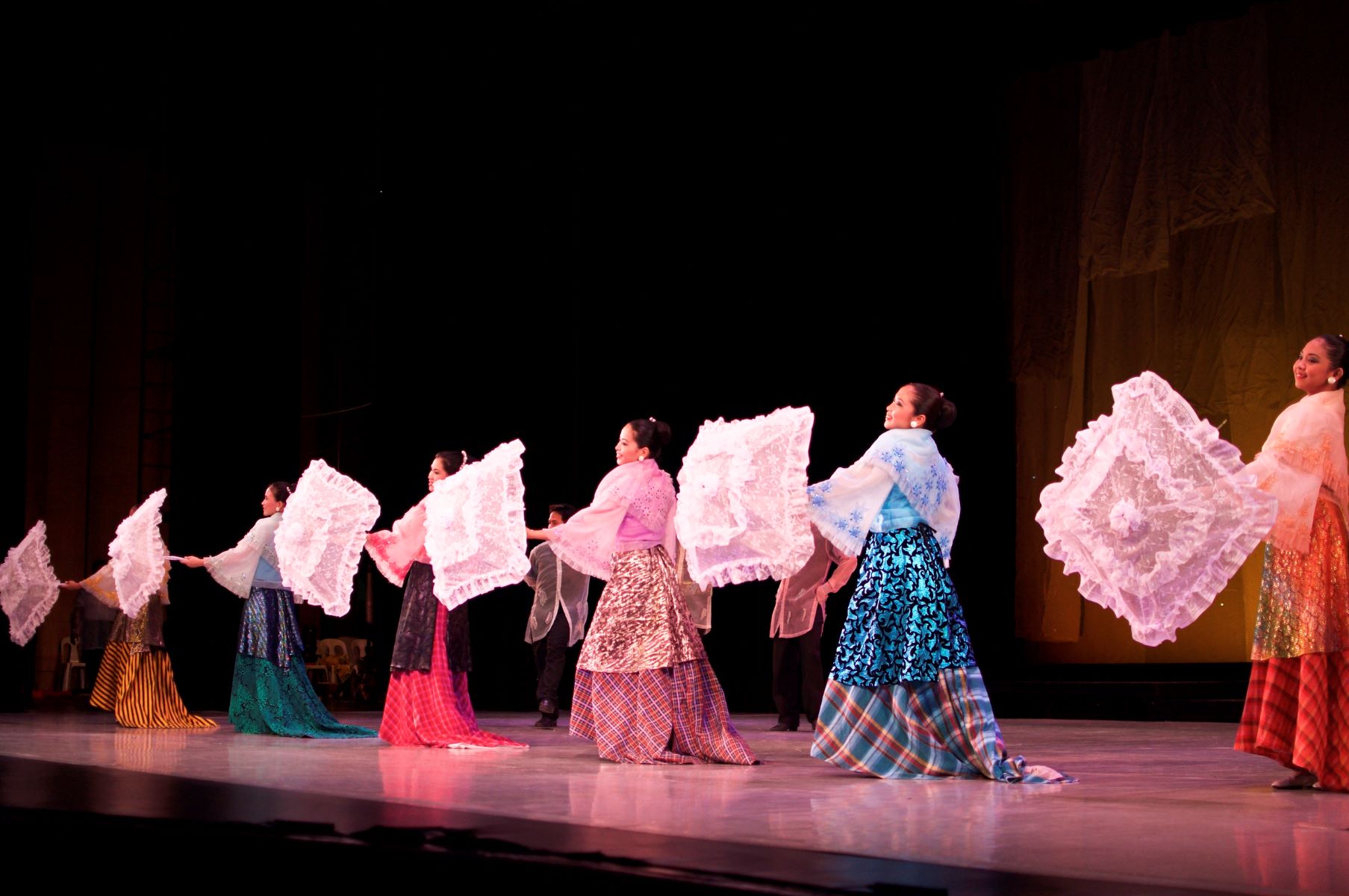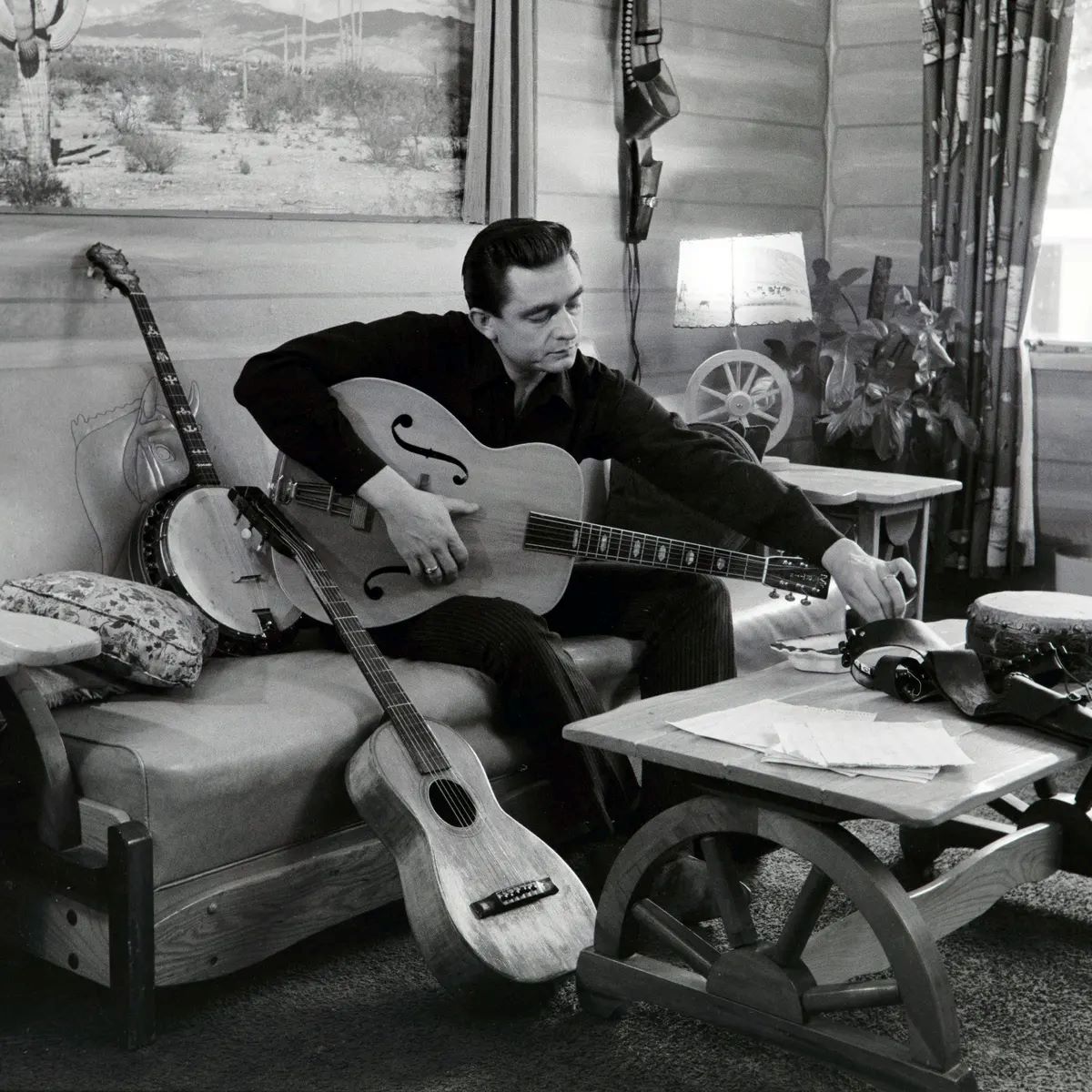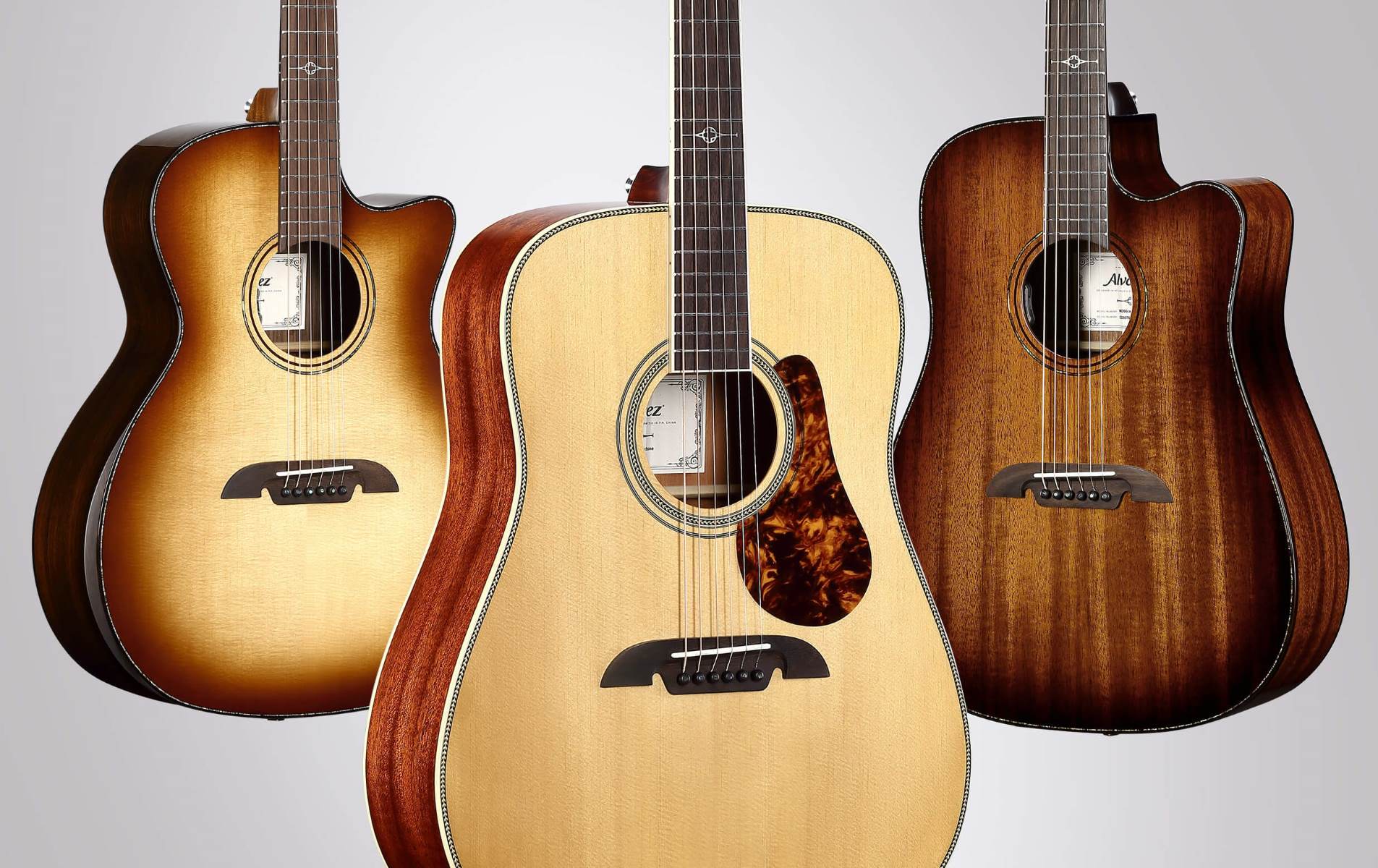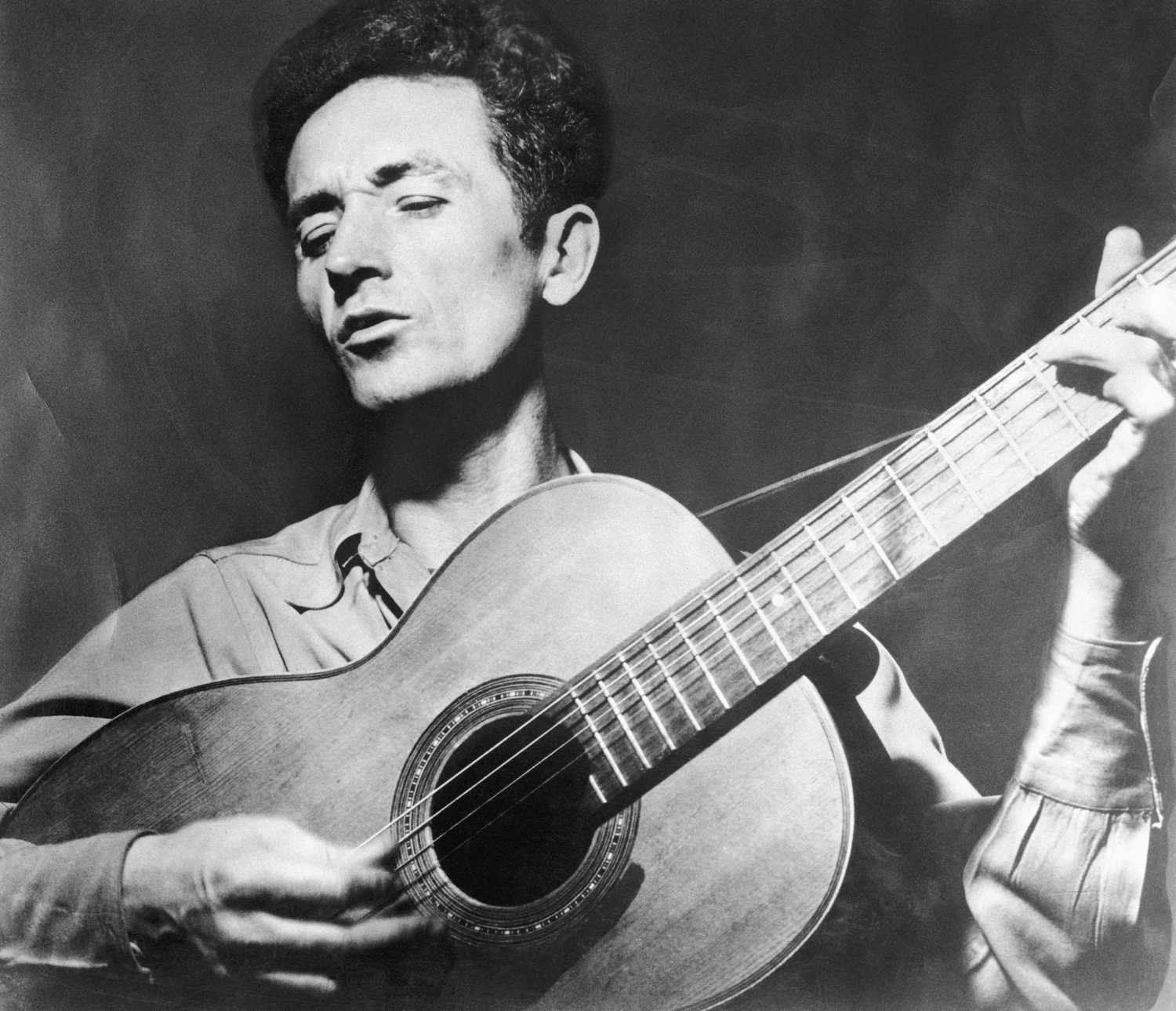

Featured
What Is Folk Music
Modified: March 11, 2024
Discover the origins and essence of folk music through our comprehensive guide. Learn about the diverse styles, instruments, and influences that have shaped this timeless genre.
(Many of the links in this article redirect to a specific reviewed product. Your purchase of these products through affiliate links helps to generate commission for AudioLover.com, at no extra cost. Learn more)
Table of Contents
Introduction
Folk music is a genre deeply rooted in cultural traditions and rich storytelling. With its origins dating back centuries, folk music has captivated audiences around the world with its unique melodies, heartfelt lyrics, and connection to everyday life. Whether sung around a campfire, passed down through generations, or performed on a grand stage, folk music carries a sense of authenticity and universality that continues to resonate with listeners of all ages.
At its core, folk music is a reflection of a community’s history, values, and experiences. It tells stories of love, struggle, triumph, and the human condition, offering insight into the lives of ordinary people and their collective heritage. While the specific characteristics of folk music can vary across cultures and regions, the essence remains the same – it is music of the people, by the people, and for the people.
Throughout history, folk music has played a vital role in shaping cultural identities and providing a voice for the marginalized and oppressed. From protest songs that fueled social movements to lullabies that comforted generations, folk music has been a means of expression, unity, and resistance.
In this in-depth exploration of folk music, we will delve into its definition, examine its origins, discuss its unique characteristics, explore its subgenres, and highlight its influence on other musical genres. We will also delve into the lives and works of popular folk music artists, discuss the preservation and revival efforts within the folk music community, and reflect on the enduring significance of folk music in our modern world.
Join us on this journey as we embark on an exploration of the captivating world of folk music. Let’s celebrate the power of music that has stood the test of time and continues to captivate hearts and minds with its timeless stories and melodies.
Definition of Folk Music
Folk music is a genre that encompasses the traditional songs, melodies, and rhythms of a particular culture or community. It is characterized by its oral transmission, meaning that it is passed down through generations by word of mouth rather than written notation. Folk music often reflects the values, beliefs, and experiences of the people who create and perform it.
One of the defining features of folk music is its communal nature. It is music that originates from and belongs to the people, representing their shared heritage. Unlike popular music, which is often produced and commercialized for mass consumption, folk music is deeply rooted in local traditions and grassroots movements.
Another key element of folk music is its simplicity. Melodies are often straightforward and accessible, making them easy to learn and sing along to. The lyrics of folk songs typically tell stories, whether they are about historical events, personal experiences, or cultural legends. These stories often resonate with listeners on a personal level and capture the essence of the human experience.
Folk music can be found in cultures all around the world, each with its own unique style and sound. From the haunting ballads of Ireland to the lively rhythms of African folk music, each tradition has its own distinct flavor and way of interpreting the world through music.
It is worth noting that folk music has evolved over time and has been influenced by external factors, such as globalization and the blending of different musical styles. Modern folk music can incorporate elements of other genres, creating a fusion of traditional and contemporary sounds.
In summary, folk music is a genre rooted in the traditions of a specific community or culture. It is characterized by its oral transmission, communal nature, simplicity, and storytelling. Through its melodies and lyrics, folk music connects people to their heritage and offers a glimpse into the collective experiences of a community.
Origins of Folk Music
The origins of folk music can be traced back to ancient times, where it emerged as a form of expression within communities around the world. The exact origins of folk music are difficult to pinpoint, as it developed independently in various cultures and regions.
One theory suggests that the roots of folk music lie in the oral traditions of ancient civilizations. In the absence of written notation, people relied on storytelling, singing, and playing simple instruments to pass down their cultural heritage. These early forms of folk music served as a means of communication, preserving history, and strengthening the bonds within a community.
As civilizations advanced and cultures intermingled through trade routes and conquests, folk music began to evolve and incorporate influences from different regions. For example, in Europe, the Celtic and Germanic tribes contributed to the emergence of folk music traditions that are still prevalent today. Their songs and melodies celebrated nature, warriors, and everyday life.
In the Americas, the African diaspora and indigenous cultures played a significant role in shaping folk music. The fusion of African rhythms, native chants, and European instruments gave birth to genres like blues, gospel, and bluegrass, which continue to thrive in contemporary folk music.
During the 19th and 20th centuries, folk music experienced a revival as scholars and collectors sought to preserve and document traditional songs and melodies. Folklorists like Cecil Sharp in England and Alan Lomax in the United States traveled around rural communities, recording and transcribing the songs they encountered. This documentation helped to create archives of folk music, allowing future generations to study and appreciate this important art form.
In addition to being shaped by cultural influences and historical events, folk music has often been intertwined with social and political movements. It has been used as a tool for protest, capturing the struggles and aspirations of marginalized communities. Songs like “We Shall Overcome” during the American civil rights movement and “Blowin’ in the Wind” by Bob Dylan during the Vietnam War era became anthems for change, reflecting the power of folk music to convey messages of hope, unity, and justice.
Today, folk music continues to evolve and adapt, drawing inspiration from new generations and exploring contemporary issues while staying true to its roots. It remains a vibrant and essential part of cultural heritage, connecting people across time and place through the universal language of music.
Characteristics of Folk Music
Folk music is characterized by several distinct features that set it apart from other genres. These characteristics contribute to the unique charm and appeal of folk music, making it a genre cherished by many.
1. Oral Tradition: One of the defining characteristics of folk music is its oral transmission. Rather than relying on written notation, folk music is passed down through generations by word of mouth. This allows for a certain level of flexibility and interpretation, as each performer adds their own personal touch to the songs and melodies.
2. Cultural Identity: Folk music often reflects the cultural identity of a specific community or region. It is deeply rooted in traditions, values, and experiences, capturing the essence of a particular group. Whether it’s traditional ballads, work songs, or dance tunes, folk music offers a glimpse into the history and collective heritage of a people.
3. Simplicity: Folk music is known for its simplicity, both in terms of melodic structure and instrumentation. The melodies are often uncomplicated, making them easy to learn and sing along to. Instruments used in folk music are typically acoustic, such as acoustic guitar, banjo, fiddle, and various percussion instruments. This simplicity adds to the accessibility and authenticity of the genre.
4. Storytelling: Folk music is deeply rooted in storytelling. The lyrics of folk songs often tell narratives, sharing tales of love, loss, historic events, or the struggles of everyday life. These stories resonate with listeners on a personal level, creating an emotional connection and immersing them in the narrative being portrayed.
5. Communal Nature: Folk music is inherently communal. It is music that belongs to the people and often brings communities together. Whether it’s a group of friends gathering around a campfire or a congregation singing hymns in a church, folk music fosters a sense of unity and collective experience.
6. Adaptability: Folk music has a remarkable adaptability, allowing it to evolve and incorporate influences from different cultures and genres. It is not confined to a specific musical structure or style, making room for experimentation and fusion. This adaptability has allowed folk music to remain relevant and vibrant throughout the centuries.
7. Cultural Preservation: Folk music serves as an important tool for cultural preservation. It helps to safeguard traditions, stories, and language by passing them down through generations. By preserving and performing traditional folk songs, communities are able to maintain a connection to their cultural roots and ensure that their heritage thrives.
These characteristics, among others, make folk music a timeless and cherished genre. Whether hauntingly beautiful ballads or foot-stomping dance tunes, folk music continues to captivate and inspire listeners around the world.
Subgenres of Folk Music
Folk music encompasses a wide range of subgenres, each with its own distinctive style and cultural influences. These subgenres have emerged from different regions and communities, showcasing the diversity and richness of folk music worldwide.
1. Traditional Folk: Traditional folk music refers to the roots of the genre, often characterized by acoustic instruments and simple melodies. This subgenre embraces the traditional songs and tunes passed down through generations, preserving the cultural heritage and stories of a particular community.
2. Celtic Folk: Celtic folk music is deeply rooted in the Celtic traditions of Ireland, Scotland, Wales, and other Celtic regions. It prominently features instruments such as the fiddle, tin whistle, bodhran, and bagpipes. Celtic folk music often tells stories of legends, mythological creatures, love, and the struggles faced by Celtic communities throughout history.
3. Americana: Americana is a subgenre that emerged from the blending of American folk music with elements of country, blues, and rock. It reflects the cultural heritage of the United States, celebrating themes of rural life, love, and the American experience. Artists like Bob Dylan, Woody Guthrie, and Joni Mitchell have contributed to the development and popularization of Americana folk music.
4. Bluegrass: Bluegrass is a form of folk music that originated in the Appalachian region of the United States. It is characterized by fast-paced acoustic instrumentation, intricate vocal harmonies, and virtuosic instrumental solos. Bluegrass is heavily influenced by traditional Irish and Scottish music and features instruments such as the banjo, fiddle, mandolin, guitar, and upright bass.
5. Folk Rock: Folk rock emerged in the 1960s as a fusion of folk music and rock elements. Artists like Bob Dylan and Simon & Garfunkel introduced electric instruments and a more contemporary sound to traditional folk music, giving rise to a new subgenre. Folk rock combines the storytelling and acoustic elements of folk with the energy and instrumentation of rock music.
6. World Folk: World folk music encompasses the folk traditions from cultures around the world. It includes subgenres such as African folk music, Latin American folk, Asian folk, and more. Each region brings its own unique instruments, vocal styles, and rhythms, resulting in a tapestry of diverse sounds and cultural expressions.
7. Protest Folk: Protest folk emerged during times of social and political unrest, often serving as a means of voicing dissent and inspiring change. Artists like Pete Seeger and Joan Baez used their music to rally against injustice, war, and inequality. Protest folk music combines the emotional storytelling of folk with powerful messages of activism and social justice.
These are just a few examples of the many subgenres within folk music. Each subgenre offers a unique perspective, reflecting the cultural, regional, and historical context from which it emerged. Together, they contribute to the vibrant tapestry of folk music and demonstrate its enduring appeal in the global music landscape.
Influence of Folk Music on Other Genres
Folk music has had a profound influence on various other genres throughout history. Its distinctive style, storytelling nature, and connection to cultural heritage have seeped into the fabric of different musical traditions, shaping and inspiring new sounds. Let’s explore some of the genres that have been influenced by folk music:
1. Country Music: Country music has roots deeply intertwined with folk music. The storytelling aspects, acoustic instrumentation, and emphasis on rural life and personal experiences are shared by both genres. Country music artists often draw from folk traditions, incorporating elements such as ballads, fiddle tunes, and the use of acoustic guitar, banjo, and mandolin.
2. Rock Music: Folk music played a significant role in the development of rock music, particularly during the 1960s folk rock movement. Artists like Bob Dylan and The Byrds fused folk elements with electric instrumentation and rock rhythms, ushering in a new sound. This integration helped bridge the cultural gap between folk and rock audiences, paving the way for further exploration and experimentation.
3. Singer-Songwriter Movement: The singer-songwriter movement of the 1970s was heavily influenced by folk music. Artists like Joni Mitchell, James Taylor, and Carole King drew inspiration from folk traditions and created introspective, heartfelt songs with personal narratives. This movement emphasized the art of the individual songwriter and showcased the power of storytelling within music.
4. Indie Folk: Indie folk is a contemporary genre that combines elements of indie rock with folk influences. Artists like Bon Iver, Fleet Foxes, and The Tallest Man on Earth incorporate acoustic instruments, introspective lyrics, and a stripped-down sound reminiscent of traditional folk music. Indie folk highlights the continued relevance and evolution of folk-inspired sounds in modern music.
5. World Music Fusion: Folk music from various cultures has influenced the world music movement, creating fusions of traditional sounds with contemporary elements. For example, artists like Yo-Yo Ma and The Silk Road Ensemble blend classical music with folk traditions from around the world, creating a unique and culturally diverse musical experience.
6. Pop Music: Folk music has also found its way into popular music, with artists like Ed Sheeran, Mumford & Sons, and Taylor Swift incorporating folk elements into their catchy pop songs. The infusion of acoustic guitar, storytelling lyrics, and melodic hooks derived from folk traditions adds depth and a sense of authenticity to their music.
The influence of folk music on these genres and many others is a testament to the enduring power and timeless appeal of folk traditions. Its ability to connect with listeners on a personal and emotional level has allowed it to transcend boundaries and shape the course of musical history.
Popular Folk Music Artists
Folk music has been enriched by countless talented artists who have left an indelible mark on the genre. Their contributions have helped to shape and redefine folk music, attracting a wide audience and inspiring future generations. Here are just a few of the notable folk music artists who have captured the hearts of listeners:
1. Bob Dylan: Bob Dylan is often regarded as one of the most influential figures in folk music history. His poetic songwriting, distinctive voice, and powerful messages became synonymous with the 1960s folk revival. Songs like “Blowin’ in the Wind” and “The Times They Are a-Changin'” became anthems of social and political change.
2. Joan Baez: Joan Baez’s angelic voice and commitment to social activism made her an icon of both the folk music and civil rights movements. Her interpretations of traditional folk songs, as well as her original compositions, resonated deeply with audiences. Baez’s timeless songs continue to inspire and engage listeners today.
3. Joni Mitchell: Joni Mitchell’s introspective songwriting and unique guitar tunings have made her a revered figure in the folk music world. Mitchell’s heartfelt lyrics and melodic sensibility produced timeless songs such as “Both Sides Now,” “Big Yellow Taxi,” and “Woodstock.” Her influence extends beyond folk, as she explored various musical genres throughout her career.
4. Pete Seeger: Pete Seeger was a folk music legend and a staunch advocate for social justice. With his banjo and powerful voice, he popularized traditional folk songs and wrote protest anthems like “Where Have All the Flowers Gone” and “If I Had a Hammer.” Seeger’s tireless commitment to activism and music left a profound impact on the folk music community.
5. Simon & Garfunkel: The folk rock duo of Paul Simon and Art Garfunkel created timeless harmonies and insightful lyrics that captured the essence of the 1960s folk scene. Songs like “The Sound of Silence,” “Bridge Over Troubled Water,” and “Scarborough Fair/Canticle” became emblematic of their musical partnership and remain beloved by fans around the world.
6. Woody Guthrie: Woody Guthrie’s folk songs served as a voice for the working class and spoke to the hardships faced during the Great Depression. His iconic song “This Land Is Your Land” has become an unofficial anthem of American folk music. Guthrie’s songwriting and storytelling influenced generations of folk artists to come.
7. Emmylou Harris: Emmylou Harris is known for her beautiful voice and ability to blend country, folk, and Americana music. With her expressive interpretations and collaborations with artists like Gram Parsons, she has created a lasting impact on the folk music landscape.
These artists are just a glimpse into the rich tapestry of folk music history. Their contributions have not only shaped the genre but also paved the way for future generations of folk musicians to continue the tradition of storytelling, authenticity, and social consciousness that defines folk music.
Preservation and Revival of Folk Music
Throughout history, folk music has experienced periods of revival and a continued effort to preserve its rich traditions. This dedication to preserving and reviving folk music is crucial in ensuring its legacy and cultural significance. Here are some of the ways in which folk music has been preserved and experienced a revival:
1. Folk Music Archives: Folk music archives, such as the Smithsonian Folkways Recordings, Library of Congress, and various local and regional collections, play a vital role in preserving and documenting folk music. These archives house recordings, songbooks, photographs, and other documents that provide a wealth of information about traditional folk songs and the communities they originate from.
2. Folk Festivals: Folk festivals provide a platform for folk musicians to showcase their talents and for audiences to experience a wide range of folk music. These festivals not only celebrate the traditional aspects of folk music but also feature contemporary folk artists, showcasing the genre’s evolution. They serve as gathering points for folk enthusiasts, offering opportunities for networking, collaboration, and cultural exchange.
3. Folk Music Societies and Organizations: Folk music societies and organizations are dedicated to the preservation and promotion of folk music. They organize events, concerts, workshops, and educational programs that allow community members, musicians, and fans to come together to appreciate and learn about folk music. These societies often provide resources and support to musicians and researchers interested in exploring and preserving folk traditions.
4. Folk Revival Movements: There have been various folk revival movements throughout history that aimed to bring folk music back into the mainstream consciousness. The 20th-century folk revival, for example, saw a renewed interest in traditional folk songs and acoustic music, largely driven by artists like Bob Dylan and Joan Baez. These movements helped reintroduce folk music to new audiences and led to a resurgence in its popularity.
5. Folk Music Education: Folk music education is instrumental in preserving and passing down traditional songs and techniques. Schools, universities, community centers, and music camps offer classes and workshops focused on folk music, allowing students to learn traditional songs, instruments, and dance styles. These educational initiatives promote the preservation of folk music while also cultivating a new generation of folk musicians and enthusiasts.
6. Online Platforms and Digital Archives: The rise of the internet has provided a platform for the distribution and preservation of folk music. Websites, streaming platforms, and online communities allow folk artists to share their music with a wider audience. Additionally, digital archives have made it easier for researchers and enthusiasts to access and study traditional folk songs and recordings from around the world.
The preservation and revival of folk music play a vital role in maintaining cultural heritage and connecting present generations with their past. Through the collective efforts of archivists, musicians, educators, and enthusiasts, folk music continues to thrive and captivate audiences worldwide.
Conclusion
Folk music holds a timeless and captivating allure that spans across cultures and generations. Its authenticity, connection to cultural heritage, and power to convey stories and emotions have allowed it to endure throughout history. From its origins in ancient traditions to its role in shaping social movements, folk music has left an indelible mark on the global music scene.
Through its oral transmission, folk music has been passed down through generations, preserving the history, values, and experiences of communities around the world. It has served as a powerful medium for storytelling, giving voice to ordinary people and highlighting their shared human experiences.
As folk music evolved and encountered different influences, it birthed subgenres like Celtic folk, Americana, and protest folk, each with its own distinctive style and regional flavor. These subgenres ensured that folk music remained dynamic and relevant, capturing the spirit of the times and resonating with contemporary audiences.
Notable folk music artists like Bob Dylan, Joan Baez, and Joni Mitchell have helped shape the genre, while festivals, societies, and digital platforms have played a crucial role in preserving and promoting folk music. These efforts ensure that the timeless melodies, powerful lyrics, and cultural significance of folk music continue to be celebrated and shared.
Furthermore, the revival and preservation of folk music are essential in safeguarding cultural heritage and fostering a sense of community. By engaging with folk music, individuals can connect to their roots, appreciate different cultures, and find common ground in shared experiences.
In conclusion, folk music remains a captivating and vital genre that continues to inspire, connect, and resonate with people around the world. Its enduring appeal lies in its ability to tell stories, evoke emotions, and unite communities. From traditional ballads to contemporary adaptations, folk music continues to be a powerful force that enriches our lives and keeps our cultural heritage alive.

